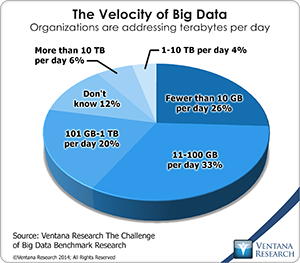Information technology enables a data-driven management style that was not feasible until powerful, affordable computers became generally available. There’s no bright line marking when this became possible; the process is ongoing. People were using financial analytics long before ENIAC, the first general-purpose computer, appeared, but the metrics available were not especially timely, broadly applicable to day-to-day situations or comprehensive enough to inform most management decision-making. Even today, there are many areas of business management where companies continue to operate much as they have in the past. One of those is pricing.
Pricing strategies are important because they can have a disproportionate impact (positive and negative) on a company’s bottom line. Managing prices has always been an activity of keen interest, but it has become even more so over the past decade as a result of the constrained pricing environment. In particular the importance of linking pricing to demand has increased. As its name suggests, demand-based pricing is a method that uses the buyer’s demand, based on an estimate of the perceived value of goods or services to the buyer, as the central element in setting an optimal price. Optimal in the sense that it best supports a company’s product and sales strategies; one may wish to be a high-volume, low-price leader while another aims to sell a premium-priced product or service to a specific market segment.
Price and revenue optimization (PRO) is a business discipline used to effect demand-based pricing; it applies market segmentation techniques to achieve strategic objectives such as increased profitability or greater market share. PRO first came into wide use in the airline and hospitality industries in the 1980s as a way of maximizing returns from less flexible travelers (such as people on business trips) while minimizing the unsold inventory by selling incremental seats on flights or hotel room nights at discounted prices to more discretionary buyers (typically vacationers). Today, it is a well-developed part of any business strategy in the travel industry and increasingly used in others.
 One reason why transportation and hospitality were early adopters of PRO is that these businesses had access to large data sets on which to base their pricing models and pricing decisions as well as a strong motivation to utilize this technique. (In the case of the major airlines it was the need to be able to offer a limited supply of budget fares to compete with low-cost carriers.) The application of analytics to pricing has spread since the 1980s as other industries have accumulated large-enough data sets to analyze and acquired the computing power and tools to analyze them. Our benchmark research on big data shows that three-fourths of companies are addressing more than 10 gigabytes of data per day and 10 percent are already dealing with a terabyte or more. They need to sift through large data sets to collect buyer behavior characteristics that will enable them to quantify how best to present the offer to each type of prospective customer.
One reason why transportation and hospitality were early adopters of PRO is that these businesses had access to large data sets on which to base their pricing models and pricing decisions as well as a strong motivation to utilize this technique. (In the case of the major airlines it was the need to be able to offer a limited supply of budget fares to compete with low-cost carriers.) The application of analytics to pricing has spread since the 1980s as other industries have accumulated large-enough data sets to analyze and acquired the computing power and tools to analyze them. Our benchmark research on big data shows that three-fourths of companies are addressing more than 10 gigabytes of data per day and 10 percent are already dealing with a terabyte or more. They need to sift through large data sets to collect buyer behavior characteristics that will enable them to quantify how best to present the offer to each type of prospective customer.
The methodology used in presenting an offer varies by industry because of limitations in the data available to a particular type of business. For example, Web-based consumer businesses attempt to gauge a buyer’s price elasticity based on readily observable demographic characteristics. (One example would be charging Apple computer owners more on the theory that they were able or willing to pay more.) Financial services companies have access to large and rich data sets that provide insight into customer behavior on which to build their price elasticity models. In bricks-and-mortar retailing, buyers are anonymous, so markdown management software must utilize actual sales and inventory data (by definition, things that aren’t selling according to plan are overpriced) and other characteristics (store location and weather, for example) to adjust prices in response to actual demand. In business-to-business selling, disaggregating features and services and then tailoring a mix of these features and services at a range of prices for each is a common approach to optimizing results.
Initially some companies built their own models, but adoption of price and revenue optimization has grown as commercial software has become available. These applications apply complex analytical models and business process management. While software is the key to enabling optimization, success also demands changes in management practices. Frequently the guidance provided by a model runs counter to established practices. For example, in the case of seasonal items in retailing, a couple of small, early price reductions generates more revenue and lower markdown costs than a big percentage cut later to clear unsold merchandise. Financial services companies can charge some of their best customers more because doing so doesn’t have a negative impact on their behavior.
Because a data-driven approach to pricing often goes against the grain of “what everyone knows” and may have a negative impact on some roles or functions in a business, change management is necessary to make the adoption of price and revenue optimization a success. I’ve identified six components that corporations must consider and manage well to be effective in using PRO: strategy, external factors, people, process, information and technology (software). Here are some thoughts on each of them.
Above all, companies must have a realistic pricing strategy that is closely aligned with their capabilities, product strategy and competitive position. In a scale-driven business, for instance, it probably doesn’t make sense for a small player to try to be the low-cost provider. Instead, pricing software enables these companies to find ways to maximize pricing in a price-conscious market by designing offerings with valued features and services that add to their margin.
Pricing strategy and execution must take into account external factors. In particular, different cultures and businesses often have their own attitudes toward fixed and negotiated pricing. In some cases, especially in consumer markets where fixed prices have been the norm, people may consider price optimization unfair. Companies that try to implement a PRO strategy must realize that they may encounter resistance and be careful in how their marketing and communications position their approach to pricing. That noted, despite some annoyance, people have grown accustomed to highly variable pricing by airlines and hotels. Also, there may be legal and regulatory issues that impinge on a company’s pricing flexibility.
As to the people dimension, management needs to ensure that the internal groups involved in pricing are behind the effort. It’s extremely important to align incentives (especially sales compensation) with the price optimization objectives. In many cases, ongoing training will be necessary to continually refine techniques and deal with issues that arise. For some organizations, a “center of pricing excellence” may be a useful way to build on its experience and entrench a culture of price optimization. Exactly how this is handled depends on whether the company has a centralized or decentralized structure to manage pricing.
People and process meet in the ongoing evaluation of price-setting practices by a cross-functional team that incorporates all stakeholders. Initially these people will meet frequently (at least once a month), but it may require only quarterly review as PRO matures. There also must be a well-defined price analytics review process to ensure the methodologies the company is using are sound.
Easy, rapid access to the data needed to support the use of pricing algorithms is a prerequisite for successful implementation of a pricing strategy. Such data feeds the analytics and facilitates rapid pricing-decision cycles. Our research consistently shows that access to the appropriate data is an issue for a majority of companies and that this issue grows in proportion to the company’s size.
Lastly, the company must acquire the right software, implement it properly and tailor it to its needs; it also should be easy to deploy, use and maintain. When it comes to pricing, there can be subtle differences in the needs of particular types of business; prospective buyers should focus on vendors that have strong references in their specific industry.
I recommend that all companies investigate how they can use price and revenue optimization in their business. There are plenty of data and capable analytical tools to help them achieve greater revenue, larger margins or both. Especially in slow growth economies this can be a winning strategy.
Regards,
Robert Kugel
Senior Vice President Research
Follow Me on Twitter @rdkugelVR and
Connect with me on LinkedIn. www.linkedin.com/in/robertkugel










